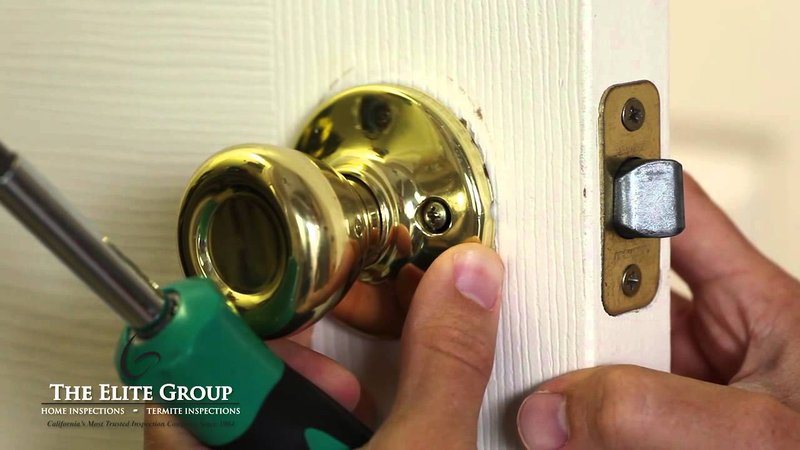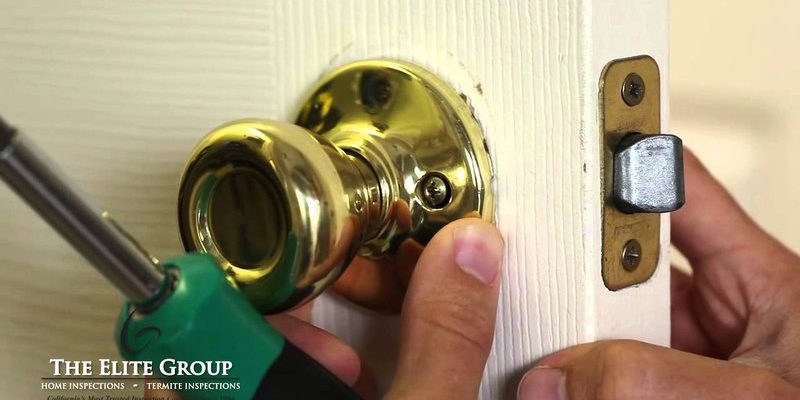
In this post, we’ll dive into the reasons behind this commonly encountered door issue, focusing on door latches, mechanisms, and even a few troubleshooting tips. Think of it like unlocking a secret: once you know what’s wrong, you can fix it and regain the freedom to open and close your door with ease.
Understanding How Door Latches Work
Door latches are clever little mechanisms designed to keep your door secure. When you turn the doorknob, the latch pin moves back into the door, allowing you to open it. When you let go, the latch pin springs back out, locking the door into place.
The latch assembly is usually made of metal and consists of several parts, including a spring, a pin, and the latch body itself. If everything is functioning correctly, you won’t even notice how smoothly everything works. But when something goes wrong—and the latch pin sticks out—it can feel like a huge inconvenience.
Imagine this: You’re trying to leave your house for an important meeting. You turn the knob, and instead of the latch retracting, you hear a stubborn click. What went awry? Let’s explore some common reasons your door latch pin might be sticking out.
Common Causes of a Sticking Latch Pin
- Misalignment: Sometimes, the door and the frame can become misaligned due to settling of the house or poor installation. When this happens, the latch cannot retract as it should.
- Dirt and Debris: Over time, dust, dirt, and even pet hair can accumulate around the latch mechanism, causing it to stick. Think of it as a tiny traffic jam in your door.
- Worn or Damaged Parts: Like everything else, door latches can wear out. If the spring inside the latch is damaged or if the pin is bent, it may not work properly.
- Humidity and Temperature Changes: Wooden doors can expand and contract due to moisture or temperature, causing the latch to stick.
Understanding these common culprits will help you pinpoint the problem much quicker.
How to Diagnose the Problem
Diagnosing why your door latch pin is sticking out isn’t as daunting as it sounds. Start by examining the latch and the door frame closely. A simple visual inspection can reveal a lot.
1. Check for Misalignment: Look at the gap between the door and the frame. Is one side higher or lower than the other?
2. Inspect the Latch Mechanism: With the door open, press the latch with your finger and observe if it retracts smoothly. If it doesn’t, this could indicate a problem.
3. Feel for Resistance: As you operate the latch, note if there’s unusual resistance or grinding noises. This can signal dirt buildup or mechanical wear.
If you recognize any of these signs, you’re one step closer to fixing that stubborn latch pin.
Simple Fixes for a Sticking Latch Pin
Now that you know what’s causing the problem, let’s talk about how to fix it. Many of these solutions are easy enough for a beginner to handle.
1. Realigning the Door:
If misalignment is the issue, you may need to adjust the door hinges. Loosen the screws a little, reposition the door, and then retighten them. Make sure the latch lines up with the strike plate in the frame.
2. Cleaning the Latch Mechanism:
A little cleaning can go a long way. Use a small brush or cloth to clean around the latch. You might also want to spray it with a lubricant that won’t attract dirt, like silicone spray. Just avoid oil-based sprays that can gunk things up over time.
3. Replacing Worn Parts:
If you suspect that internal components are worn out, you might need to replace them. Visit your local hardware store with the old parts, and they’ll help you find what you need.
4. Adjusting for Humidity:
If temperature and humidity are affecting your door, consider adjusting your indoor climate or using a dehumidifier.
These simple steps often resolve the problem and save you from calling a locksmith.
When to Call for Professional Help
Sometimes, despite your best efforts, the issue persists. If you’ve tried all the simple fixes and your door latch pin continues to stick, it might be time to get a professional involved.
– Persistent Misalignment: If the door refuses to align even after adjusting the hinges, there may be underlying structural issues.
– Severe Wear and Tear: A latch that’s severely damaged might require complete replacement. This is where a professional can recommend a sturdy, high-quality latch that suits your door type.
– Increased Security Needs: If you’re worried about safety or security, it’s best to consult an expert who can advise you on the most secure options available.
In these cases, it’s better to be safe than sorry, especially when it comes to home security.
Preventative Measures for the Future
To keep your latch pin functioning properly, consider these preventive steps:
1. Regular Maintenance: Check your door hardware regularly. A quick clean and lubrication every few months can do wonders.
2. Monitor Changes: If your home settles or if you notice changes in your door’s operation, address them immediately to prevent more significant issues.
3. Choose Quality Hardware: When replacing latches, invest in quality materials that are appropriate for your environment. Better components tend to last longer.
By taking these steps, you can prevent future frustrations with a sticking latch pin.
A door latch pin sticking out can be more than just a minor annoyance. Understanding why it happens and how to fix it can save you time and frustration. Whether it’s a simple cleaning job or a need for professional help, you now have the tools to tackle this issue head-on.
So next time you face that stubborn latch, remember: it’s just a little hiccup in your door’s operation, not a big deal. With the right knowledge and a bit of elbow grease, you’ll have your door swinging smoothly in no time.
